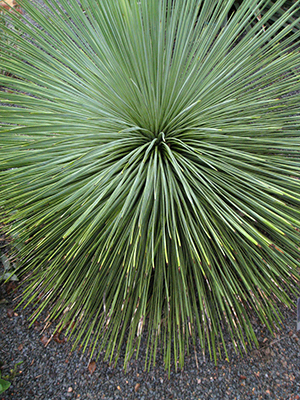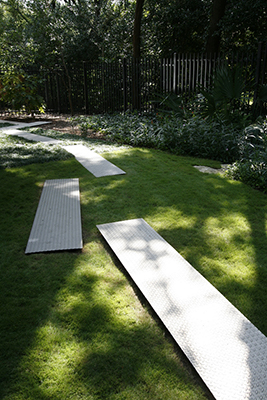Modern Landscape Design

If a landscape with an uncluttered appearance and clean lines interests you, then a modern design aesthetic just might be right for you.
Some key aspects of a modern landscape are
- Clean lines and edges
- Plants that have symmetrical or distinct growing forms and sculptural silhouettes
- Subtle uses of color with mostly various shades of green with one or two accent colors. You can avoid a sterile looking modern design by adding warm colored materials – like wood or concrete colored in warm tones.
- Minimalist look
- Repetition of elements
- Geometric designs, straight lines, and sharp angles
- Open spaces
Modern landscapes generally do not have
- Plants with free growing forms or bushy appearances
- A wide variety of lots of different types of plants
- Soft, meandering shapes or curves throughout the landscape

Some popular plants for a modern landscape design include
Lawns
A small manicured lawn is often part of a modern design aesthetic. Keeping your small lawn properly cared for will help you maintain those clean lines you’re looking for. Always remember to follow best management practices for maintaining your Florida lawn. Proper fertilization, watering, and mowing will help you maintain a healthy turf. Learn more about best care practices for your Florida lawn.
Non-plant materials
One material you’ll find frequently featured in modern landscaping is rock and concrete juxtaposed with ornamental grasses.
However, in Florida’s climate, rock and concrete in the landscape can increase heat and create an uncomfortable space. A good alternative is to use concrete judiciously; leave spaces between concrete slabs and consider porous materials such as concrete paving stones.
Rock mulch can be used when placed around the foundation of your home, although it doesn’t really have a place in your planting beds. When used in place of organic mulch, rock does not provide the benefit of buffering the soil temperature from extreme heat and cold, contributing to the soil’s nutrient content or increasing the water holding capacity of the soil. However, when used around the foundation of your home, rock mulch can lessen the impact of rainfall from your roof overhang and protect the soil from erosion without floating away or attracting pests.

